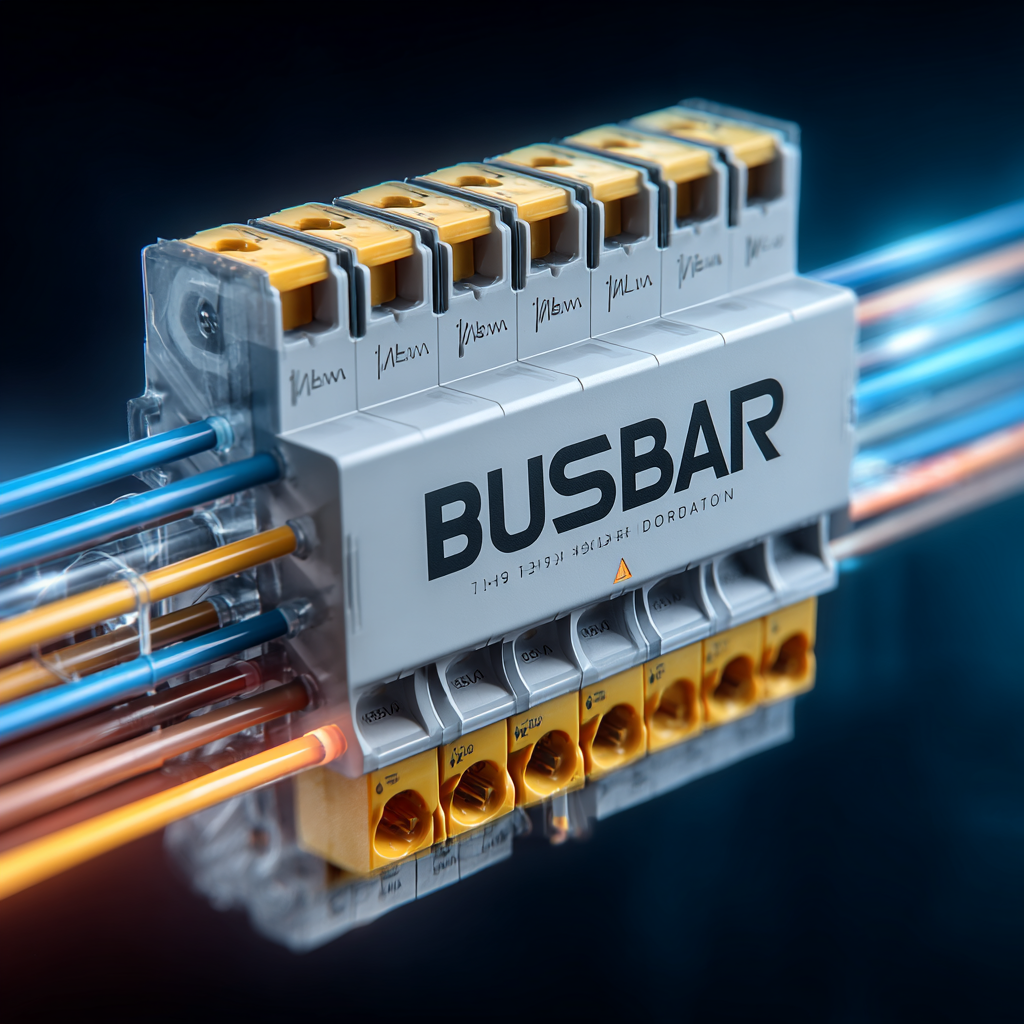Leave Your Message
-
Phone
-
E-mail
-
Whatsapp
-
Whatsapp


Busbar Distribution systems have increasingly become the backbone of electrical distribution in commercial and industrial settings, offering efficiency and scalability that traditional wiring cannot match. According to the International Electrotechnical Commission (IEC), busbar systems can improve energy efficiency by up to 25% compared to cable systems, making them a crucial choice for modern infrastructure projects. As industries seek to enhance their operational effectiveness in the face of rising energy costs and demand for reliability, understanding the nuances of Busbar Distribution systems is vital. Moreover, a report by Grand View Research indicates that the global busbar market is expected to surpass $35 billion by 2025, driven by the need for improved power management in various sectors. Therefore, selecting the right busbar solution is essential for ensuring optimal performance, safety, and longevity of electrical systems, and this blog will explore key factors to consider in that decision-making process.

Understanding the importance of busbar distribution in electrical systems is crucial for ensuring efficient and reliable power management. Busbars play a vital role in connecting various components of electrical systems, such as generators, transmission lines, and loads. Their design and efficiency can significantly affect power quality and operational stability, particularly in environments like data centers where consistent power supply is critical. Recent developments highlight the challenges posed by connected non-linear loads, which can disrupt power quality. Evaluating these impacts is essential for maintaining optimal performance.
As we explore high-voltage DC distribution, the use of advanced busbar solutions becomes even more pertinent. With the projected growth of the medium power busbar market and the increasing demand for reliable power distribution in modern infrastructures, selecting the right busbar system is paramount. Innovations like hybrid intelligent protection strategies demonstrate the evolving landscape of busbar technologies, ensuring safety and efficiency amid rising complexities in electrical loads. Thus, understanding your specific needs and the intricacies of busbar distribution systems can lead to improved performance and durability in electrical applications.

When selecting a busbar distribution solution, several key factors significantly influence your decision. The first critical aspect is size; the busbar must accommodate the specific electrical load requirements for your application. Oversized busbars can lead to unnecessary material costs, while undersized options may result in overheating and potential system failures. Ensuring that you accurately calculate the required size based on load demands is essential for both safety and efficiency.
Material choice is another vital consideration. Copper and aluminum are the most common materials used for busbars. Copper offers superior conductivity, making it an excellent choice for high-performance applications, yet it can be more expensive. In contrast, aluminum presents a cost-effective alternative, albeit with lower conductivity. Choosing the right material requires a balance between budget and performance needs.
Finally, configuration plays a crucial role in optimizing your busbar system. Whether you're dealing with straight-line configurations or more complex assemblies, ensuring that your layout maximizes space and minimizes voltage drop is important. Additionally, consider whether your project requires a removable or fixed installation. Assessing these configurations before making a selection can streamline installation and maintenance processes.
When selecting a busbar distribution solution, one of the most crucial factors to consider is your load requirements. Calculating the optimal amperage is essential for ensuring efficient performance and longevity of the busbar system. According to a report by the International Electrotechnical Commission (IEC), improper sizing can lead to overheating and premature failure, resulting in costly downtimes and repairs. Typically, busbars should be designed to handle loads slightly above the anticipated maximum current draw, often recommended to be 125% of the normal load to account for fluctuations and prevent overload.
To accurately calculate the necessary amperage for your busbar, it's vital to assess all connected devices and their power ratings. The National Electrical Manufacturers Association (NEMA) suggests creating a comprehensive list of equipment and their operational loads, factoring in inrush currents for motors or any surge conditions that may occur. Additionally, environmental factors such as temperature and air quality can influence performance; as thermal resistance increases with high ambient temperatures, it may be beneficial to oversize the busbar system slightly to mitigate these effects. By carefully evaluating these parameters, you can ensure your busbar distribution system meets your operational requirements while maintaining safety and efficiency.
When selecting the optimal busbar distribution solution, thermal management is crucial. Effective thermal management helps maintain the performance and longevity of busbars, ensuring they operate efficiently under various load conditions. According to a report by the International Electrotechnical Commission (IEC), improper thermal management can lead to a 30% decrease in the lifespan of electrical systems. Therefore, investing in appropriate thermal solutions is imperative for maximizing operational efficiency.
One prevalent thermal management solution involves the use of advanced insulating materials that enhance heat dissipation. For instance, studies by the Electric Power Research Institute (EPRI) indicate that integrating high-performance thermal insulation can reduce thermal losses by up to 25%. Additionally, the incorporation of cooling systems, such as forced air or liquid cooling, has been shown to improve current-carrying capacity significantly—by as much as 40% in some configurations. Ultimately, understanding the specific thermal requirements of your busbar distribution system is essential for selecting the best operational strategy, ensuring safety and reliability in demanding environments.

When it comes to busbar installations, adhering to industry standards and compliance is crucial for ensuring safety and efficiency. According to the National Electrical Manufacturers Association (NEMA), non-compliance with these standards can lead to increased risks of electrical failures and hazardous situations. For example, improper spacing and installation procedures can significantly elevate the chances of electrical arcing, which poses a severe threat to both equipment and personnel. Implementing a busbar distribution solution that meets standards like NEMA AB 1 not only ensures optimal performance but also safeguards against potential liabilities.
Moreover, the International Electrotechnical Commission (IEC) emphasizes the importance of regular inspections and tests. A report by the Institute of Electrical and Electronics Engineers (IEEE) highlighted that 30% of electrical failures in industrial environments stem from inadequate adherence to safety standards during installation. As a result, selecting a busbar distribution solution that aligns with recognized standards ensures not only compliance but also enhances the longevity and reliability of the electrical distribution system. By prioritizing safety through thorough knowledge of industry regulations, businesses can foster a secure and efficient operational environment.
| Tip No. | Tip Description | Considerations | Compliance Standards |
|---|---|---|---|
| 1 | Assess Power Requirements | Understand your load demands and growth potential. | IEC 61439-1 |
| 2 | Evaluate Installation Environment | Consider temperature, humidity, and contamination levels. | IEC 60529 (IP Ratings) |
| 3 | Select Appropriate Materials | Choose copper or aluminum based on conductivity and cost. | ASTM B224 |
| 4 | Consider Safety Features | Look for features like short-circuit protection and fault current ratings. | IEEE 141 |
| 5 | Check for Modular Design | Modular solutions allow for future expansions and customization. | UL 857 |
| 6 | Review Technical Support and Warranties | Ensure adequate technical support and warranty coverage. | ISO 9001 |
| 7 | Consult with Experts | Engage professionals to evaluate specific needs. | Relevant Local Electric Codes |
